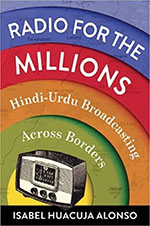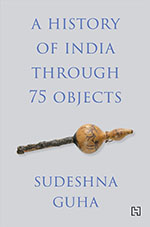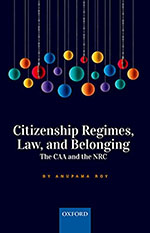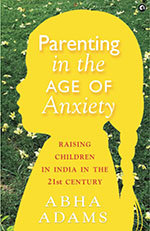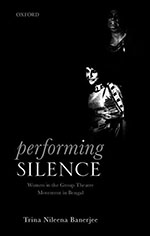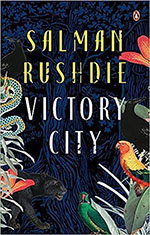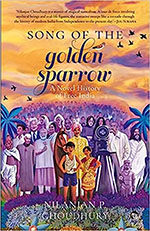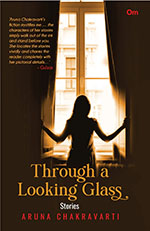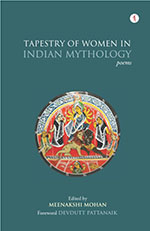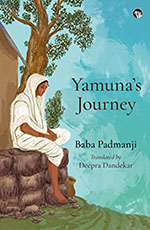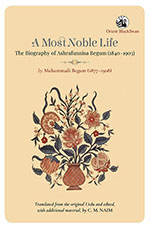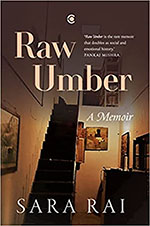There is an impression that Humayun has not received adequate attention in historical writings on the great Mughals. However, there is an earlier scholarship in which Humayun figures quite prominently. The pioneers were SK Banerji, whose study, based on his doctoral thesis of 1925, was published in 1938; Sukumar Ray, whose detailed essay on the ruler’s Persian sojourn was published in 1948.
Archives
May 2023 . VOLUME 47, NUMBER 52022
A study of the ‘hybrid half-century’, The Broken Script is a narrative of the city of Delhi for the period 1803-1857, when the Mughal Empire witnessed the last vestiges of its power and the British East India Company emerged as the de facto ruler, marking the end of one way of life and the rise of another. It is the story of a city, ‘a fast-modernizing society’ in the midst of profound changes, a discussion on its culture, literature, language, intellectualism, its tehzeeb, social and economic life.
This collection of essays is representative of the themes pursued by Richard Eaton. As a definitive, prolific and meaningful scholarly voice studying medieval India since the 1970s, Eaton’s essays cover a swathe of topics in the domains of social and cultural history. While some themes—such as the cultural history of Islam, and the social history of religious communities—are regularly featured in writings by historians of medieval India.
Members of the Ajnabi Radio Shrota Sangha (Strangers’ Radio Club) in Bhagalpur, Bihar, regularly tuned into Radio Ceylon, broadcast from Colombo, Sri Lanka, to vote for their favourite songs on Binaca Geetmala, a subcontinental hit countdown show. The club was among 400 radio listeners’ groups that were voluntarily formed by Hindi film music fans in India, mid-1950s onwards, to collectively listen to and talk about the popular music that they ironically did not have access to via their national broadcaster, the All India Radio (AIR).
In Gillian Tindall’s engaging book on Bombay, City of Gold (1982), she describes initial encounters with colonial buildings and her incredulous response: ‘Hallo! Fancy seeing you here?’. Indeed, colonial buildings may seem strange implants in the tropical landscape despite their historic presence for three centuries on Indian soil. Michael Mann argues for Calcutta that between 1770s and 1830s, the East India Company committed itself to a vision—that of building another Rome and set a trend.
History is an ever-evolving subject. Historians have, in recent times, attempted to study this subject through various novel ways. And understanding the human past through historical objects is one such technique which has become quite popular in recent times. Sudeshna Guha’s latest work A History of India through 75 Objects belongs to this category of history writing.
Who belongs to the nation? And, how do we become members of a state? The responses to such questions are often contested. These contestations have led to violent conflicts, and therefore, citizenship laws were created to determine the membership to a political community. In Citizenship Regimes, Law, and Belonging: The CAA and the NRC, Anupama Roy examines the form and content of recent changes to citizenship regimes and laws in India by locating the Citizenship Amendment Act (CAA 2019), the National Register of Citizens (NRC), and the Land Border Agreement (LBA 2015) in their historical, ideological, and political contexts.
This book is about Geo-Economics (the intersection of economic and geo-political objectives) and self-confessedly examines issues from a Euro-centric, or even at times, from a narrower Anglo-American perspective. It examines what, from this perspective, is the central question which bedevils global policy today: ‘How can liberal democracies maintain their values even as they find themselves interdependent with powers whose traditions and attitudes stand at odds with their own?’
We live in a terribly violent world characterized by hyper-nationalism, militarism, war, reckless social Darwinism and massive environmental disaster. Yet, even amid the all-pervading darkness, some of us continue to strive for the lamp of truth. Possibly, Meenakshi Thapan’s book seeks to remind us that we should not give up but try our best to illumine the new generation through a practice of education that radiates the spirit of love, peace, dialogue and the ethic of care.
Abha Adams’s reputation as India’s preeminent educationist precedes her, and for good reason. As a pioneering force in education, amongst her many accomplishments, her instrumental contribution in the birth and setting-up of the country’s iconic institutions, widely regarded as schools that are centres of excellence—Shriram Schools & Step by Step, themselves speak volumes of her knowledge and insights.
Juvenile, not Delinquent is an elucidation of the author’s rendezvous with the innumerable children who find themselves on the other side of law; the legal quagmire children find themselves in, with little support to navigate the complexities of the juvenile justice system; and the unwavering commitment of those who never give up on them. It is an account of the countless ways the child ‘offenders’ challenge, inspire, and often transform the lives of professionals who work with them.
My first glimpse into the lives of women in Bengali Group Theatre was through the Seagull Theatre Quarterly Volumes 27/28 (2000). Focusing on directors and female actors in Group Theatre scenario of Kolkata, the discussions brought out a reflective recollection of many intertwined lives. The most moving aspect of women’s love for theatre, craving for self-expression and the economic need to earn were brought out in a complex narrative.
Soumitra Chatterjee was an extraordinary man. His cinematic acting career straddled the worlds of arthouse films, commercial potboilers, and middlebrow entertainers with equal grace. He is known as much for rom-coms like Basanta Bilāp and the superb Bāksa Badal, as the swashbuckling villain in Jhinder Bandi; as the much-loved sleuth Feluda in Satyajit Ray’s Sonār Kellā and Jai Bābā Felunāth; as for his long-standing association with Ray’s more serious ventures.
Christmas, considered primarily a Christian celebration, has now become a global affair celebrated in all forms, ways and colours by people across the world. In India however, Christmas is often seen either as the product of a certain colonial hangover or increasingly as catering to global capitalist interests. Ironically, as Jerry Pinto reminds us, at the heart of Christmas is the humble birth of Jesus Christ who represents love, hope and peace to all humanity.
The book provides a rich historical account of the evolution of cricket from the fourteenth century till recent times. In the course of its discussion, Richard H Thomas has depicted how the game has reflected the dynamics of English society. Moreover, the book has manifested the transformations of cricket at several historical epochs.
2023
On August 12, 2022, Salman Rushdie was due to speak at the Chautauqua Institution in New York State. Shortly after the speakers ascended on the stage, a 24-year-old man called Hadi Matar attacked Rushdie with a knife. Rushdie fell to the floor after sustaining a dozen stab wounds. Those who had doggedly or intermittently followed Rushdie’s career began wondering if Ayatollah Khomeini’s fatwa from 1989 had finally caught up to him.
2022
Dark Star by Ranbir Sidhu is a powerful rendition of the act of remembering. It is a three-part internal monologue by an elderly woman who has returned from California to her husband’s ancestral village in Punjab, and is now trying to learn how to die since ‘Death is a mystery, no one teaches you how to die’ (p. 69). As the novel unfolds, the woman is suspended in a dream-like state, at the mercy of her memories. These memories wade through different traumas, both personal and collective, locating the narrative within the frame of her troubled past, the Partition, the Khalistan movement and the recent farmers’ protest.
Translator, poet and writer Maithreyi Karnoor has received the Charles Wallace India Trust Fellowship for creative writing and translation at Literature Across Frontiers, University of Wales, Trinity Saint David. She has won the Kuvempu Bhasha Bharati Prize for translation and has been shortlisted for the Lucien Stryk Asian Translation Prize and the Montreal International Poetry Prize. This is her debut novel.
Since the dawn of history, in every age and in every place, these men have been there. Sometimes they wear skull caps, sometimes their foreheads are smeared with vermillion or sandalwood paste, sometimes crucifixes dangle from their necks. Like the colours of a chameleon, their outer appearance keeps changing, but they are the same men—their eyes reddened by anger and fear, hearts blackened by hate, hands grasping shovels, swords and chains that gleam with bloodlust.
Aruna Chakravarti is well known for her translations and evocative novels about Bengal. This striking collection of stories displays her taut control over the genre of short fiction. Each of the stories reads like a novella, vividly creating varied locations, houses, communities while revealing interior landscapes. They open a window to new worlds by playing with ‘perceptions’, which is also the title of one of the stories.
Tapestry of Women in Indian Mythology is an anthology of poems with contributions from 70 poets, both women and men. The book has an epic-like range and draws attention not only to women from mythology who are part of the popular imagination but more importantly, to those whose narratives have been ignored, suppressed or completely glossed over.
Yamunaparyatan, deemed to be the first Marathi novel, was published in 1857. It was written by Baba Padmanji Mulay, a formidable activist-intellectual and public persona of his times (1831-1906). It has now been translated into English as Yamuna’s Journey by Deepra Dandekar, a keen chronicler-critic of Padmanji’s times and texts.
Women’s role and contribution to Urdu literature and journalism in the eighteenth and nineteenth century remains a relatively under-examined area. CM Naim’s A Most Noble Life: The Biography of Ashrafunnisa Begum (1840-1903), makes an important intervention as it tells the tale of an extraordinary woman who was deeply devoted to the cause of women’s education, and enriches the reader with a wealth of material that highlights the social, cultural, and literary context that shaped the contours of ordinary Muslim women’s lives in the nineteenth century.
Sarala boarded the train from Ahmedabad. Her body seemed to burn. As if she was in the grips of a fever. She craned her neck to the sills of the window, to breath in a little fresher air. She perhaps went to sleep without intending to. When her eyes opened, her neck was stiff. Half of her face blackened by fine particles of coal flying from the rail engine looked at her from her hand held mirror. She shrank to the core. What if someone saw her like this, what would they make of it?’
Sara Rai, a renowned contemporary author in Hindi who is at home with its literary and sociocultural landscape, notes that she has chosen to write about writing, as well as the journeys of her family and their times, in English. Perhaps it is to reach a wider reading public. Or perhaps, it is a language which allows emotional and intellectual distance. For Raw Umber is a literary memoir fashioned with circumspection in some ways, and with an evocative lyricism in others.
The translator Vishes Kothari’s note that prefaces Vijaydan Detha’s collection of folk tales reminds us that what we are going to read is an act of literary and cultural translation as well as a feat of literary magic where the intangible is made visible and accessible to the readers who do not have access to the original Rajasthani stories and perhaps even the milieu in which these stories are set and from which they emerged.




